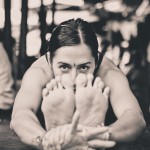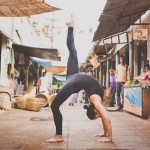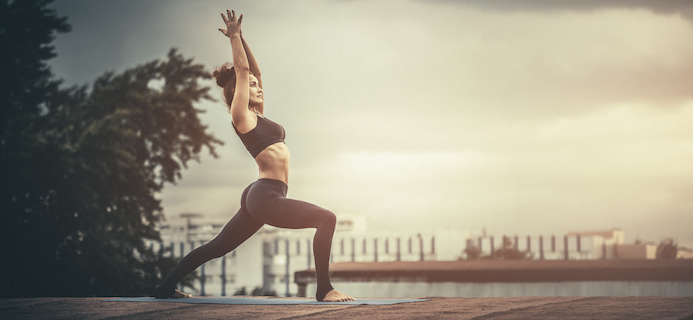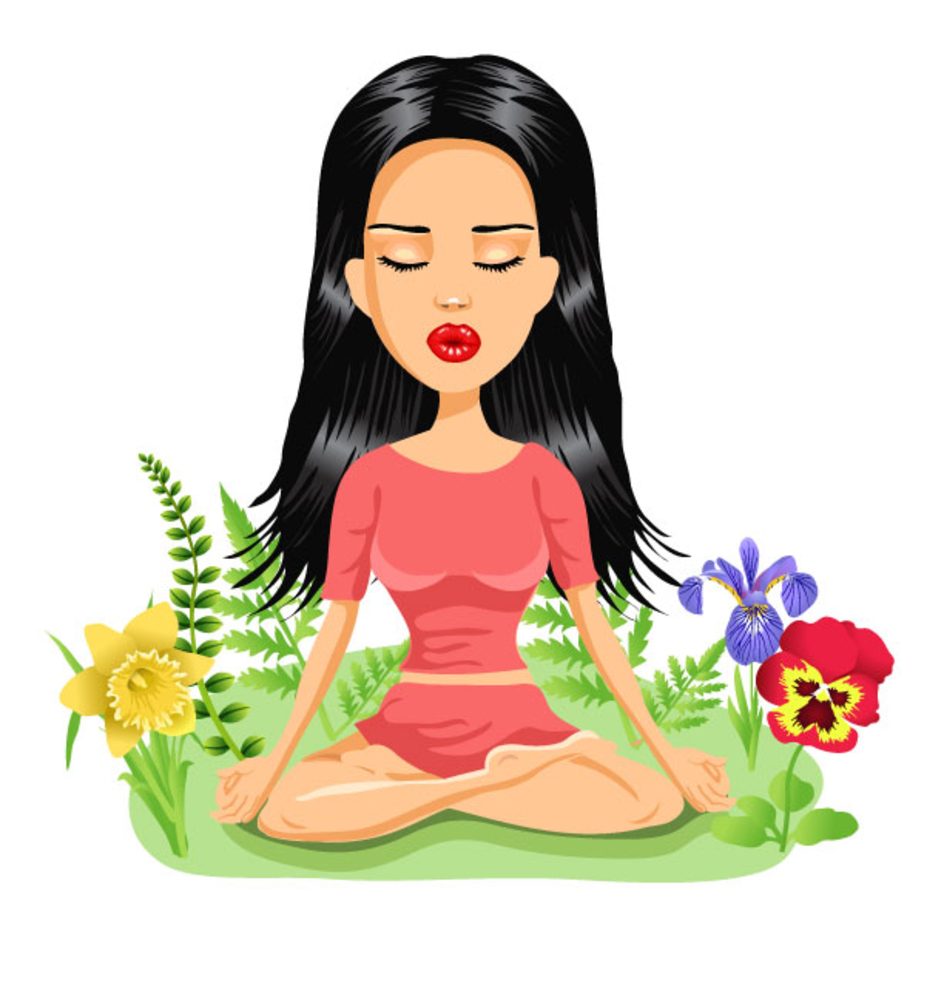
As a yoga teacher I’m just as guilty as the next yoga teacher about warbling on in yoga speak. Intentions. Third Eyes. Aligning charkas. These memes can often leave students – especially those new to yoga – feeling dazed and confused. But don’t be put of by some of the sh*t we yoga teachers say. There is significance behind our yoga-speak, and it’s worth examining further.
‘Set your intention’
Have you set your New Year’s resolution yet? As a yoga teacher and student, setting a resolution is not something I do once a year. Rather, it’s something I do every time I roll out my yoga mat. It’s called setting an intention.
you might set an intention to let go of fear in your practice
When I first started to practice nearly 15 years ago, I struggled with the concept of setting an intention. I remember flicking through Merriam Webster’s Dictionary, hoping for some kind of clarification beyond the simple definition of intention as something that you plan to do or achieve.
Back then, all I could think of was ‘I’d like to have longer hamstrings’ or ‘I’d like to be skinny like that teacher.’ While setting an intention before you begin moving and stretching and breathing can be something as simple as that, it can also hold deeper significance.
In Sanskrit – the language of yoga – the word for intention is Sankalpa, which asks you to go deeper than setting a goal. Sankalpa asks you to explore the reasons behind your resolution.
For instance, you might set an intention to let go of fear in your practice. Making a Sankalpa will explore your fear – are you afraid of falling out of a balancing pose like Warrior III because you are afraid to fail? Are you afraid of looking foolish? Are you afraid of trying again? Does this behavioural pattern repeat itself off the mat in your personal life? Your professional life?
One of my favourite intentions is to remember and cherish and dedicate my practice to loved ones
Setting this intention to let go of fear allows you to become conscious of the emotion, and allows that feeling to arise and then pass, rather than dictate how you approach things. In this way, setting an intention will start to introduce deeper meaning to your practice, and perhaps your life.
Get creative with your intention. Sometimes I set an intention to practice in a non-judgemental and non-competitive way. Other times, I choose to be patient, or to be more open to new possibilities. One of my favourite intentions is to simply remember and cherish and dedicate my practice to loved ones – for instance, my father who died several years ago.
Take your intention with you. Don’t leave it on the mat. An intention’s value lies in its ability to manifest itself deeply in all aspects of your life.
‘Be present’
I’ve got one yogi friend who has “BE PRESENT” tattooed on her ankle. When she’s in downward dog, she looks to her feet and focuses on the tattoo. The words remind her to bring her focus into what’s happening right now. The sensations you feel in your body (my shoulders feel constricted!) as well as your mind (I’m irritable!).
Bringing your mind into the present moment is not just a yoga technique. It is also practiced in mindfulness, which is an ability to live in the present and regulate your thoughts and emotions to feel more positive, focused and fulfilled.
As a teacher, I can always tell when a student’s mind is wandering. Take the guy who sneaks skittles into his mouth while in Child’s Pose. The signs are not always so obvious – some students fiddle with the placement of their mats throughout class. Others allow their gaze to wander the room, looking to see who is kicking up into handstand.
dristi (which means gaze point in Sanskrit) refers in yoga classes to where you are looking
There are two easy ways to bring your mind out of yesterday’s New Year’s Eve party and into your Triangle Pose. First, with the breath. Breathe with sound, consciously exploring the quality of your breath. Deepen it. Expand it. Smooth it out.
Next is dristi (which means gaze point in Sanskrit). It refers in yoga classes to where you are looking. Your gaze should be single-pointed and unwavering. Different asanas, or yoga positions, have different dristis – in Warrior I, you look to your up stretched hands. In a standing forward bend, toward your toes. Dristi is a practice of concentration, and brings the scattered mind inward.
‘Grounding’
Grounding is a word used so often in yoga classes that it has lost some of its punch. What does it really mean? Start by feeling the physical connection to your mat. Where does your body connect to the mat, to the ground, to the earth? Be very specific – when you’re lying down, does one leg press rest more heavily into the mat than the other leg? Does one shoulder lift away from the mat more than the other? Does your head tilt in one direction over the other?
Grounding is a word used so often in yoga classes that it has lost some of its punch.
Grounding allows us to bring us out of our heads and into our bodies by encouraging us to think about the here and now.
On a psychological level, when we find a connection to the earth, we can connect to something bigger than ourselves. Yoga philosophy says we are not isolated egos floating around in space, but part and parcel with the universe. When you ground yourself on a psychological level, suddenly your problems aren’t overwhelming and all encompassing.
‘Find your edge’
The edge is that place you go in a yoga pose where you are being sufficiently challenged without hurting yourself. You are looking for intensity without pain – that point of balance where you are using your muscles but not abusing them.
Take Baddha Konasana, a seated asana where the soles of the feet are pressed together with the knees dropping out to the sides. It can be an intense posture for many people, especially those with tight hips and inner groin muscles. It’s pretty easy to identify your edge when you begin leaning forward in Baddha Konasana. To go further than your flexibility edge is detrimental to the body and thus counterproductive. But without finding and working with your edge, without moving toward the limits of your comfort zone, the body will not open any further.
The edge is that place you go in an a yoga pose where you are being sufficiently challenged without hurting yourself.
How long can you stay in a pose? That is your endurance edge. How long can you maintain interest in the pose? That is your mental edge. Create the perfect amount of intensity – not too much, and not too little.
When your yoga teacher ask you to find your edge, they want you to snuggle up to intensity without running away from it. Once at that point, do not fight it. Breath into it, and work with it. As on the mat, so in life – learn from “bad” experiences in life without being knocked over by them.
While it’s easy (and quite funny) to parody the sh*t yoga teachers say, there is often value behind our new agey vocabulary. Next time you are unsure what your yoga teacher is saying, stay after class and ask for clarification.
Today is International Yoga Day

Genny also teaches Vinyasa Flow Yoga and Ashtanga Yoga at London studio Triyoga.
Read more from Genny :
Think you can’t do a headstand?
I did intense yoga until the day I gave birth
Some days I feel like I could fly
Like this article? Sign up to our newsletter to get more articles like this delivered straight to your inbox.






















































